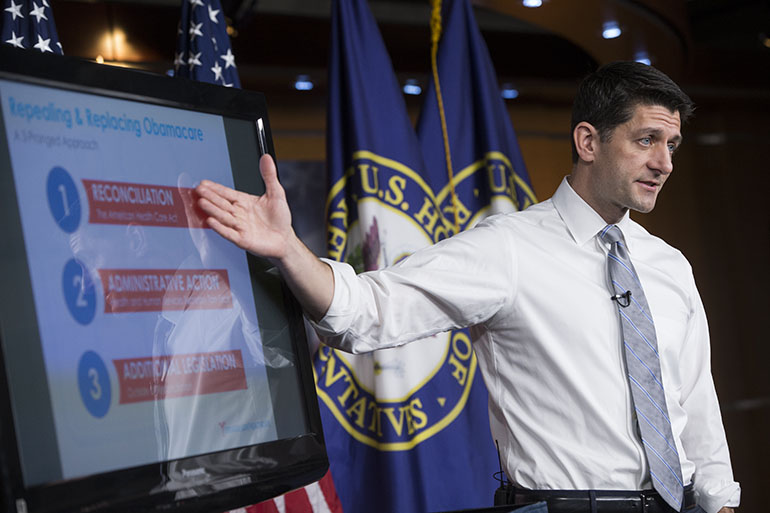The average 40 percent drop in subsidies proposed under the GOP health care bill would put coverage out of reach for many Californians on the state exchange, according to a preliminary analysis released Tuesday.
People living in pricey cities like San Francisco, as well as the elderly and those with low incomes, would be most seriously affected, the Covered California analysis shows. That’s because the Affordable Care Act takes into account income and location, whereas the Republican bill offers flat-rate tax credits based only on age (up to $75,000 in income for an individual).
The Covered California analysis provides some stark comparisons:
- Under the ACA, also known as Obamacare, a 62-year-old living in San Francisco making $20,000 a year would pay $84 a month with a tax credit for silver plan coverage (the second-least-costly plan). Under the GOP plan, that person would pay $668.
- A San Francisco family of four earning $41,000 a year would pay $346 more in premiums per month under the GOP plan for coverage similar to an Obamacare silver plan.
- A 27-year-old making $30,000 a year in San Francisco would pay $9 per month less under the GOP plan than for Obamacare coverage. A 62-year-old would pay $460 more.
In Los Angeles, many people would pay less under the GOP plan vs. Obamacare, especially young people and families, according to the analysis. That’s because health care there is much less expensive. All beneficiaries making at least $50,000 a year would pay much less in premiums under the GOP plan, because it offers tax credits to more affluent people who don’t qualify for them under Obamacare.
The analysis came a day after the Congressional Budget Office released a report saying that the GOP’s plan, the American Health Care Act, would cut government subsidies for older and low-income consumers and cause an estimated 24 million Americans to lose their coverage by 2026.
Covered California has approximately 1.5 million enrollees, who benefited from $4.2 billion in premium subsidies last year, said Peter V. Lee, Covered California’s executive director, at Tuesday’s monthly board meeting. Ninety percent of exchange enrollees receive subsidies to help them cover the costs of their premiums.
Covered California’s calculations show that in 2016 the average subsidy for an individual was worth $3,500. Meanwhile, households received an average of $5,300 per year in subsidies. Twelve percent of households got subsidies worth about $10,000.
“That [$10,000] wasn’t a gift, it wasn’t extra money,” Lee said in a media call Tuesday. “It was given to them because without it they would have not been able to afford coverage.”
Ignoring income and geography means poor people would be worse off, Lee said.
Since 2014, the ACA has helped lower California’s uninsured rate from almost 17 percent to 7.1 percent, through both Covered California and an expansion of Medi-Cal, the state’s Medicaid program.
This story was produced by Kaiser Health News, which publishes California Healthline, an editorially independent service of the California Health Care Foundation.







